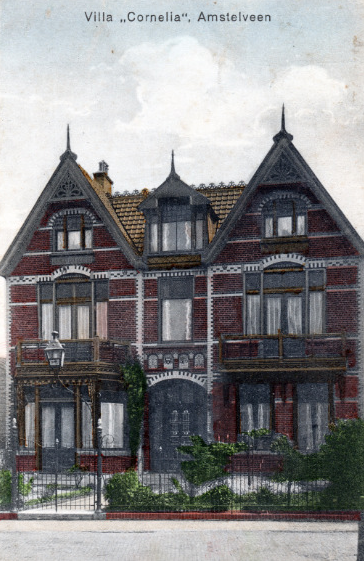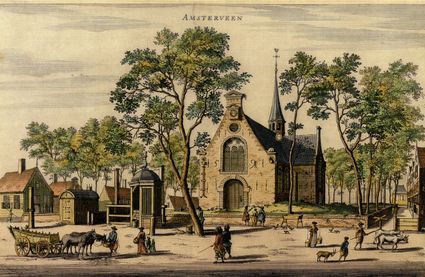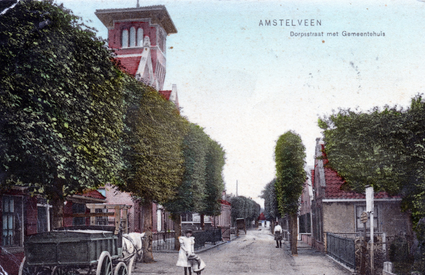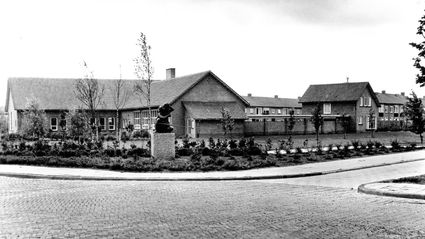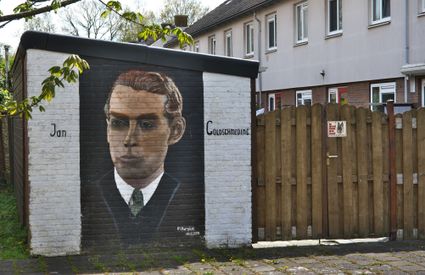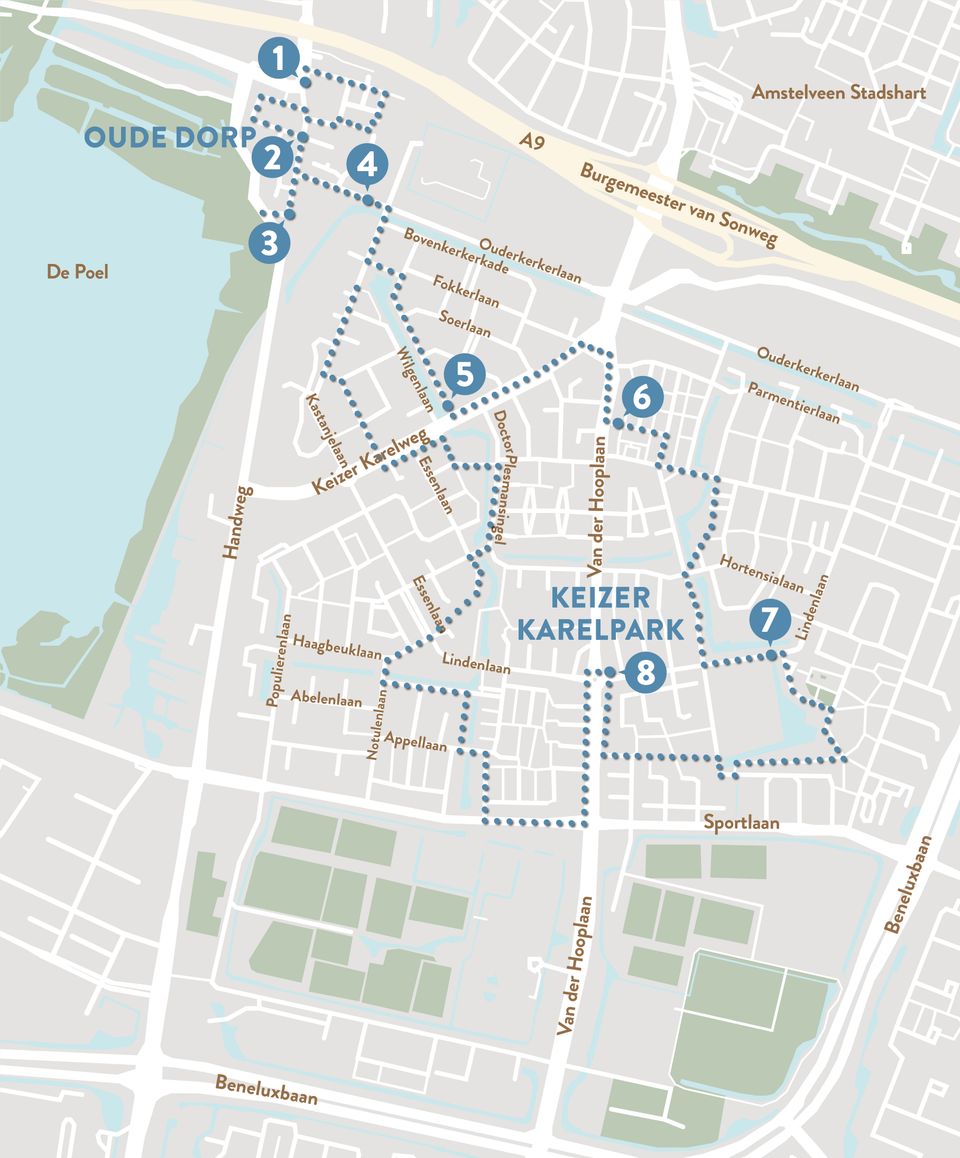Oude Dorp and Keizer Karelpark
Originally, the Nieuwer-Amstel district consisted of a stretched out fenland to the west of the Amstel river. Within it, the village of Amstelveen served as it's governing center. The area was largely agricultural and supplied the neighbouring city of Amsterdam with peat, vegetables, dairy products and eggs. On old prints, Amstelveen is easily recognized by the pointed tower of the Dorpskerk. The church dates from 1568. However, it is likely that there was a chapel as early as 1319.
Dorpsplein (Village Square)
For centuries the Dorpsplein formed the heart of Amstelveen. T…
Originally, the Nieuwer-Amstel district consisted of a stretched out fenland to the west of the Amstel river. Within it, the village of Amstelveen served as it's governing center. The area was largely agricultural and supplied the neighbouring city of Amsterdam with peat, vegetables, dairy products and eggs. On old prints, Amstelveen is easily recognized by the pointed tower of the Dorpskerk. The church dates from 1568. However, it is likely that there was a chapel as early as 1319.
Dorpsplein (Village Square)
For centuries the Dorpsplein formed the heart of Amstelveen. There was the church and across from it the reformed poorhouse, where orphans and the elderly lived. The square also had a pump, a blacksmith and a fire signal. This last item was a reminder of the great disaster that befell the village in 1792. That year fire broke out in a wax bleaching plant, where candles were made. The fire quickly spread. A considerable part of the village was reduced to ashes, but the church was spared. A national collection was held for the rebuilding of the village. Prints depicting the fire were sold for that purpose. The buildings in the current Old Village date from after the fire.
De Witte Stad (The White City)
In 1924, just outside Amstelveen's Oude Dorp, construction began on a garden village, a sheltered neighborhood with family homes and lots of greenery. The construction did not go well. The first construction companies soon went bankrupt, after which the operating company De Witte Stad took over construction. That name is still associated with this part of Amstelveen. It is part of the district of Keizer Karelpark.
Modern architecture
The architecture of Keizer Karelpark offers a rich sampling of styles. And the oldest part of the neighborhood (De Witte Stad) was built in the style of the Amsterdam School. After that came the reconstruction with austere, modest houses and many high-rise buildings. The shopping gallery on the Van der Hooplaan is a good example. In the surrounding streets other styles can be seen, such as the organic design of the International School on the Sportlaan and the Parkflat on the William Boothlaan with its contemporary architecture.
Take a look
Sights on this route
